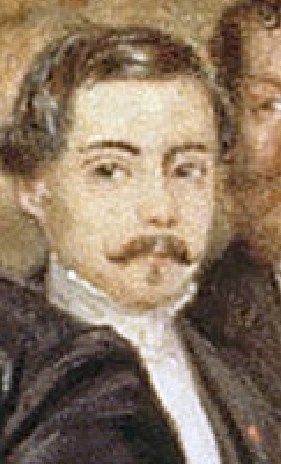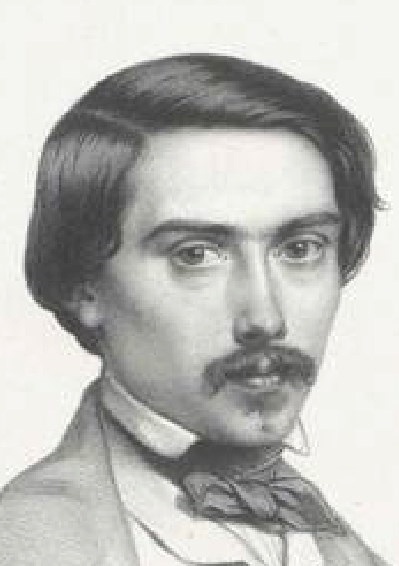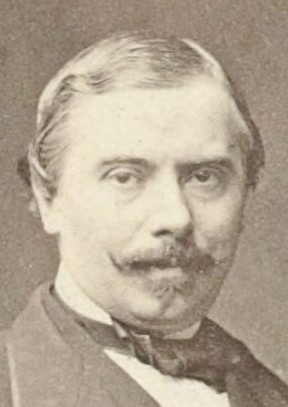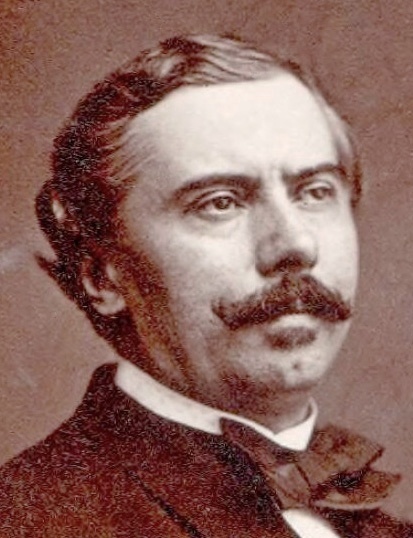Charles Müller (1815–1892), Painter
1st image: Soirée; 2nd: gravure (1840s); 3rd: photo by Bingham (1860); 4th: photo by Nadar (1865). (Alternative: Dantas)
Painter Charles-Lucien-Louis Müller is mentioned by Armand Dayot in his gravure (1900) of the Soirée au Louvre. Müller's distinctive mustache, hair, and eyebrows closely match those of the figure in question, and he held the Chevalier rank in the Légion d’Honneur since 1849, supporting his identification.
A talented painter, Müller gained widespread recognition at the 1850 Salon with his historical masterpiece, Appel des dernières victimes de la Terreur dans la prison de Saint-Lazare. This monumental work —measuring over four by eight meters— portrays prisoners during the 1794 Revolution, awaiting their turn to face the guillotine. His paintings became known for their striking clarity and vibrant color palettes.
Beyond his artistic talent, Müller was intelligent, witty, and deeply religious. He frequently attended Viel-Castel’s43vendredi-soirée afterparties alongside other regulars such as Longpérier37 and Clément de Ris26b. His participation is recorded on several occasions, including February 7, February 14, and March 28, 1851, and continued throughout the late 1850s. Despite his presence at the arriere-soirée at Viel-Castels atelier on December 29, 1858, when Giraud caricatured Dantas, Müller never was caricatured —either by deliberate omission or due to the loss of approximately fifty drawings.
Together with fellow aristocrats —many of whom are depicted in Soirée au Louvre, including Auber56, Augier53, Delacroix10, Mérimée54, de Morny48, Scheffer41a, Viollet-le-Duc40a, and of course de Nieuwerkerke16,— Müller frequented the many soirées and high-society dinner gatherings that illuminated Paris —then the largest city in Europe— on a daily basis during the cultural height of the Second Empire.
His extensive connections facilitated major artistic commissions.
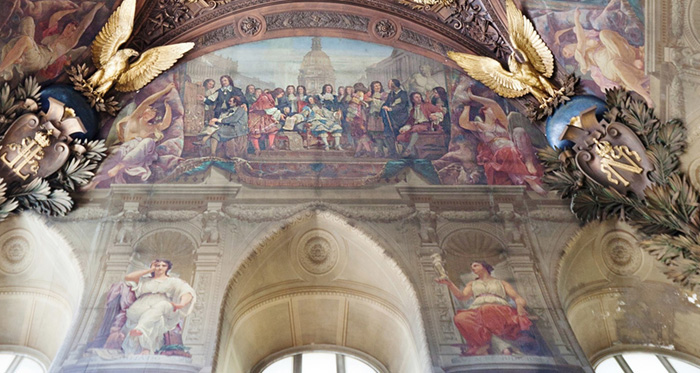
Visitors to the Louvre can still admire his frescoes on the ceiling of Salon Denon, which he completed in 1868.
In 1864, Müller succeeded Flandrin79 at the École des Beaux-Arts.
After living a retired life for many years, Müller fell victim in January 1892 to a recurring wave of the Russian flu pandemic (1890). Remarkably, that same month also marked the deaths of de Nieuwerkerke and Henriquel-Dupont51.
